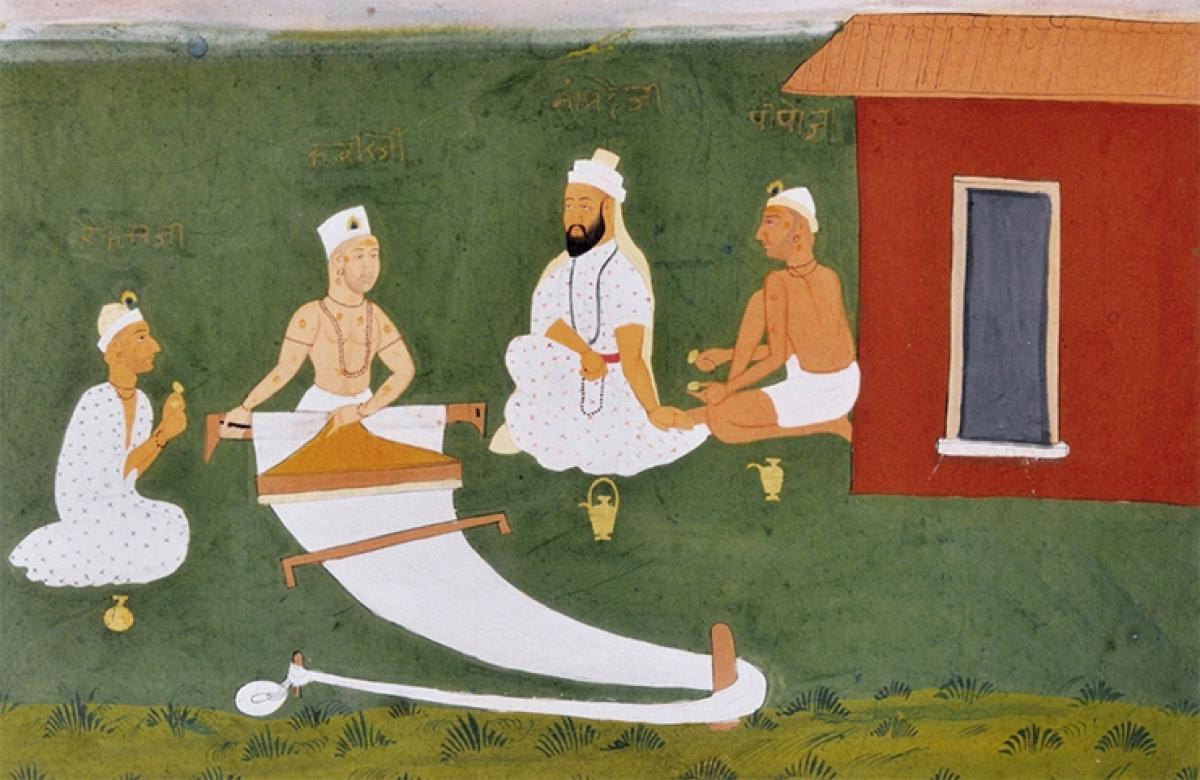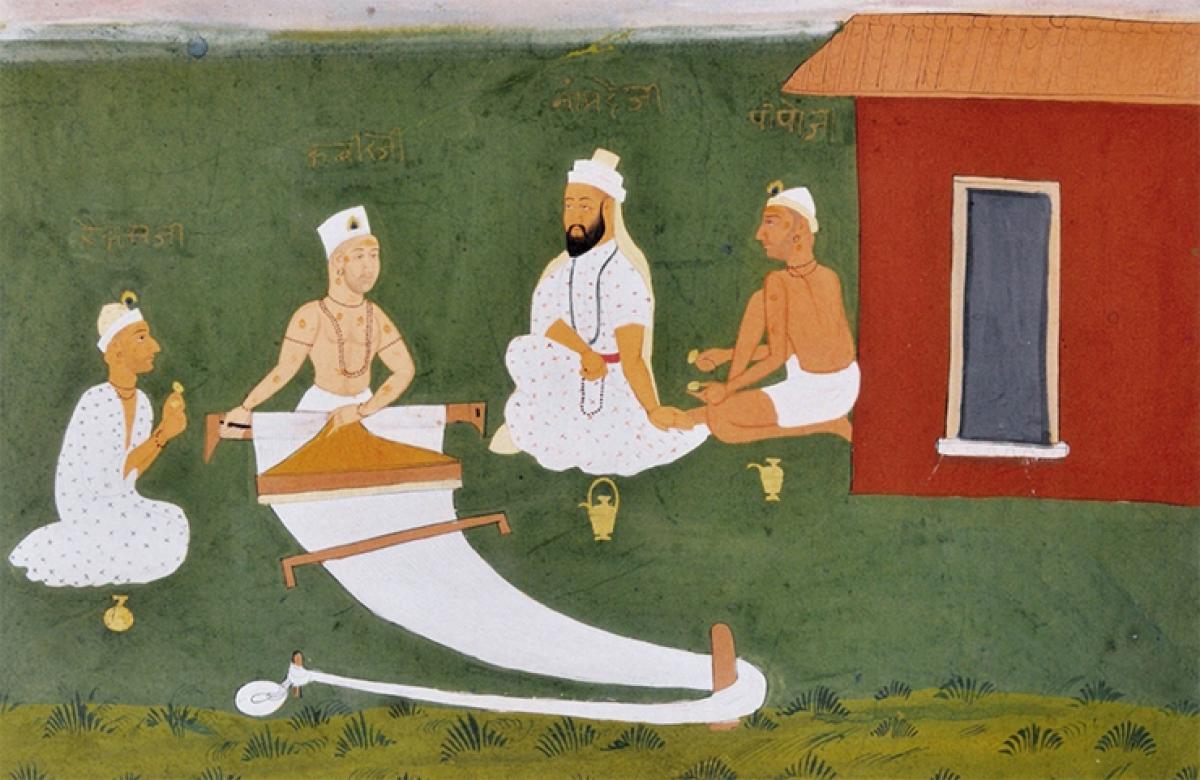Live
- Dispute at hostel in Wanaparthy district – Warden suspended
- AP, TG move forward to settle bifurcation issues
- AI to speed up Lord’s darshan at Tirumala
- Nayantara: Beyond Fairy Tale Review: A Doc That Falls Flat
- Utsav-The Sweets Cafe & Live Kitchen Opens in Hyderabad
- G20 Leaders Will Talk About Climate, Taxes, and Trump's Return in Brazil
- COP29: CDRI announces $8 million funding for 12 projects to address climate crisis
- Anti-Telgu remarks: Actor Kasthuri Shankar moves court for bail
- Samsung AR Smart Glasses Set to Launch in 2025, Featuring Ray-Ban Meta-Like Design
- Kerala Industries Minister confident that new policy will boost plantation sector
Just In

The development of Bhakti movement took place in Tamil Nadu between the seventh and twelfth centuries. It was reflected in the emotional poems of the Nayanars (devotees of Shiva) and Alvars (devotees of Vishnu). These saints looked upon religion not as a cold formal worship but as a loving bond based upon love between the worshipped and worshipper.
The development of Bhakti movement took place in Tamil Nadu between the seventh and twelfth centuries. It was reflected in the emotional poems of the Nayanars (devotees of Shiva) and Alvars (devotees of Vishnu). These saints looked upon religion not as a cold formal worship but as a loving bond based upon love between the worshipped and worshipper.

They wrote in local languages, Tamil and Telugu and were therefore able to reach out to many people. In course of time, the ideas of the South moved up to the North but it was a very slow process. Sanskrit, which was still the vehicle of thought, was given a new form.
Thus we find that the Bhagavata Purana of ninth century was not written in the old Puranic form. Centered on Krishna’s childhood and youth, this work uses Krishna’s exploits to explain deep philosophy in simple terms. This work became a turning point in the history of the Vaishnavite movement which was an important component of the Bhakti movement.
A more effective method for spreading of the Bhakti ideology was the use of local languages. The Bhakti saints composed their verses in local languages. They also translated Sanskrit works to make them understandable to a wider audience. Thus we find Jnanadeva writing in Marathi, Kabir, Surdas and Tulsidas in Hindi, Shankaradeva popularising Assamese, Chaitanya and Chandidas spreading their message in Bengali, Mirabai in Hindi and Rajasthani.
In addition, devotional poetry was composed in Kashmiri, Telugu, Kannad, Oriya, Malayalam, Maithili and Gujarati. The Bhakti saints believed that salvation can be achieved by all. They made no distinction of caste, creed or religion before God. They themselves came from diverse backgrounds.
Ramananda, whose disciples included Hindus and Muslims, came from a conservative brahman family. His disciple, Kabir, was a weaver. Guru Nanak was a village accountant’s son. Namdev was a tailor. The saints stressed equality, disregarded the caste system and attacked institutionalised religion. The saints did not confine themselves to purely religious ideas.
They advocated social reforms too. They opposed sati and female infanticide. Women were encouraged to join kirtans. Mirabai and Lalla (of Kashmir) composed verses that are popular even today. Amongst the non-sectarian Bhakti saints, the most outstanding contribution was made by Kabir and Guru Nanak. Their ideas were drawn from both Hindu and Islamic traditions and were aimed at bridging the gulf between the Hindus and the Muslims. Let us read in some detail about them.
Kabir (1440-1518) is said to have been the son of a brahman widow, who abandoned him. He was brought up in the house of a Muslim weaver. Kabir believed that the way to God was through personally experienced bhakti or devotion. He believed that the Creator is One. His God was called by many names - Rama, Hari, Govinda, Allah, Rahim, Khuda, etc.
No wonder then that the Muslims claim him as Sufi, the Hindus call him Rama-Bhakta and the Sikhs incorporate his songs in the Adi Granth. The external aspects of religion were meaningless for Kabir. His beliefs and ideas were reflected in the dohas (Sakhi) composed by him.
One of his dohas conveyed that if by worshipping a stone (idol) one could attain God, then he was willing to worship a mountain. It was better to worship a stone flour-grinder because that could at least fill stomachs. Kabir emphasised simplicity in religion and said that bhakti was the easiest way to attain God. He refused to accept any prevalent religious belief without prior reasoning.
For him, a man could not achieve success without hard work. He advocated performance of action rather than renunciation of duty. Kabir’s belief in the unity of God led both Hindus and Muslims to become his disciples. Kabir’s ideas were not restricted to religion. He attempted to change the narrow thinking of society. His poetry was forceful and direct. It was easily understood and much of it has passed into our everyday language.
Another great exponent of the Nankana school was Guru Nanak (1469-1539). He was born at Talwandi (Nakana Sahib). From an early age, he showed leanings towards a spiritual life. He was helpful to the poor and needy. His disciples called themselves Sikhs (derived from Sanskrit sisya, disciple or Pali sikkha, instruction).
Nanak was as much a social reformer as he was a religious teacher. He called for an improvement in the status of women. He said that women who give birth to kings should not be spoken ill of. His vani (words) along with those of other Sikh Gurus have been brought together in the Guru Granth Sahib, the holy book of the Sikhs.
The Vaishnavite Movement
You have read that saints such as Kabir, Namdev and Guru Nanak had preached devotion toward a nirankar form of God. During this period, another movement based upon devotion towards a sakar form of God had also developed. This movement, called the Vaishnavite movement, centered around the worship of Rama and Krishna, who were seen as incarnations (avatars) of Lord Vishnu.
Its main exponents were Surdas, Mirabai, Tulsidas and Chaitanya. Their path to salvation was expressed through the medium of poetry, song, dance and kirtans. Surdas (1483-1563) was a disciple of the famous teacher, Vallabhachara. He was a blind poet, whose songs are centered around Krishna. His Sursagar recounts the exploits of Krishna during his childhood and youth with gentle affection and delightfulness.
The love for Krishna was also expressed through the songs of Mirabai (l 503-73). Widowed at an early age, she believed in a spiritual marriage with her Lord. Her poems have a quality of their own and are popular even today The Vaishnavite movement spread in the east through the efforts of Chaitanya (1484- 1533).
Chaitanya considered Krishna not as a mere incarnation of Vishnu but as the highest form of God. The devotion for Krishna was expressed through Sankirtans (hymn session by devotees) which took place in homes, temples and even street processions. Like other Bhakti saints, Chaitanya too was willing to welcome everyone, irrespective of caste, into the fold. The saints thus promoted a sense of equality amongst the people.
The worship of Rama was popularised by saints like Ramananda (1400-1470). He considered Rama as the supreme God. Women and outcastes were welcomed. The most famous of the Rama bhaktas was Tulsidas (l 532-1623) who wrote the Ramacharitmanas. The Vaishnavite saints developed their philosophy within the broad framework of Hinduism. They called for reforms in religion and love amongst fellow beings. Their philosophy was broadly humanist.

© 2024 Hyderabad Media House Limited/The Hans India. All rights reserved. Powered by hocalwire.com







